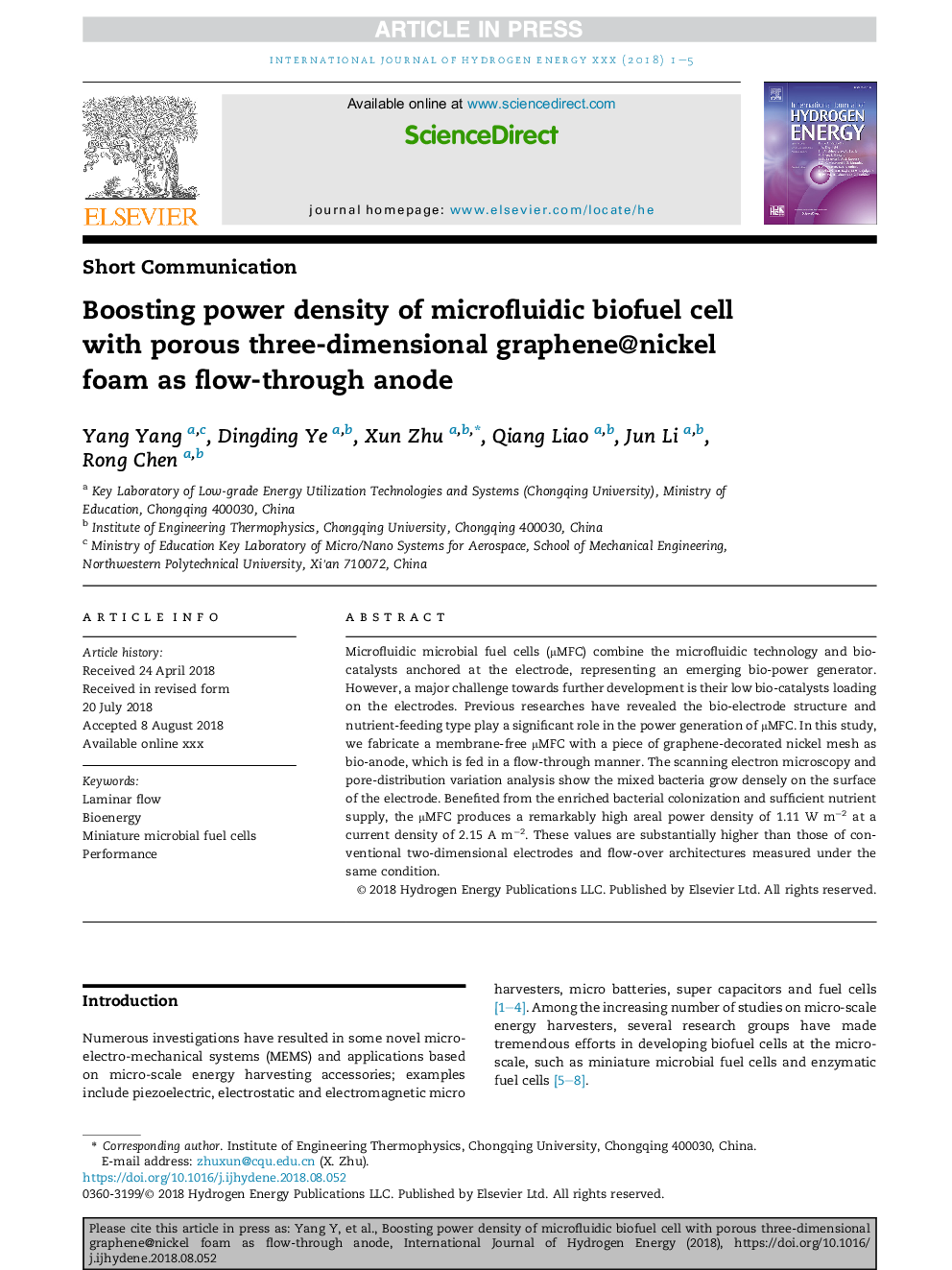| Article ID | Journal | Published Year | Pages | File Type |
|---|---|---|---|---|
| 10154661 | International Journal of Hydrogen Energy | 2018 | 5 Pages |
Abstract
Microfluidic microbial fuel cells (μMFC) combine the microfluidic technology and bio-catalysts anchored at the electrode, representing an emerging bio-power generator. However, a major challenge towards further development is their low bio-catalysts loading on the electrodes. Previous researches have revealed the bio-electrode structure and nutrient-feeding type play a significant role in the power generation of μMFC. In this study, we fabricate a membrane-free μMFC with a piece of graphene-decorated nickel mesh as bio-anode, which is fed in a flow-through manner. The scanning electron microscopy and pore-distribution variation analysis show the mixed bacteria grow densely on the surface of the electrode. Benefited from the enriched bacterial colonization and sufficient nutrient supply, the μMFC produces a remarkably high areal power density of 1.11 W mâ2 at a current density of 2.15 A mâ2. These values are substantially higher than those of conventional two-dimensional electrodes and flow-over architectures measured under the same condition.
Keywords
Related Topics
Physical Sciences and Engineering
Chemistry
Electrochemistry
Authors
Yang Yang, Dingding Ye, Xun Zhu, Qiang Liao, Jun Li, Rong Chen,
